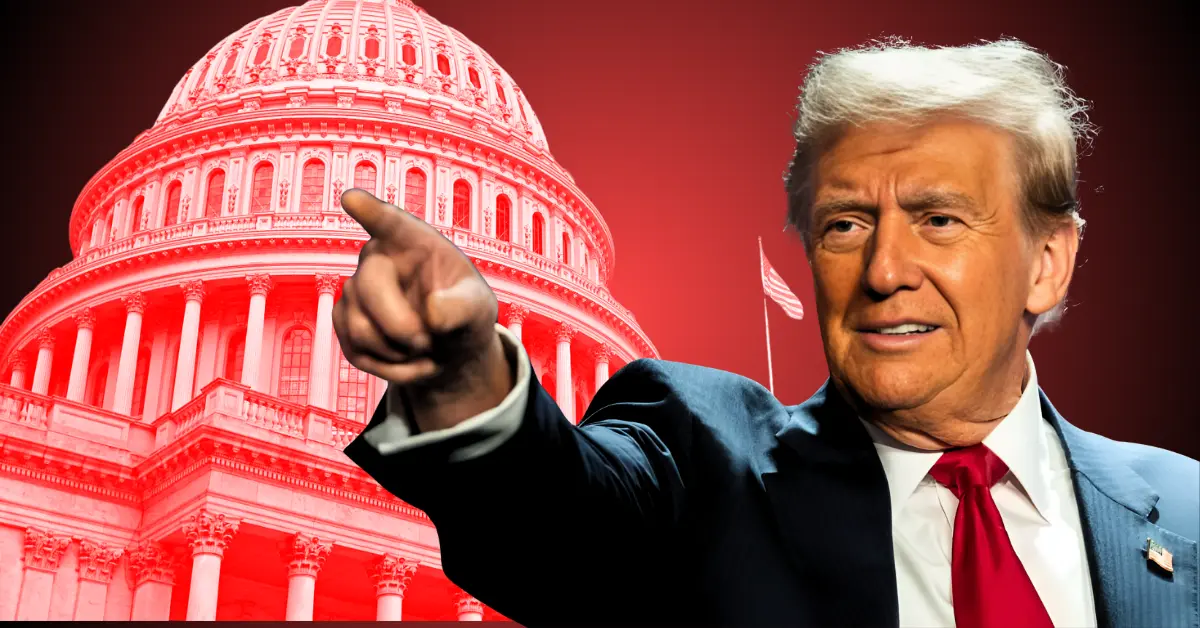The “One Big Beautiful Bill Act” of 2025 has ignited a firestorm of debate across the United States, reflecting the deep political and ideological divisions that have come to define the nation. The bill’s narrow passage in the Senate, secured by a tie-breaking vote from Vice President JD Vance, underscores the intense partisan battles that have surrounded its journey through Congress. As the legislation now moves to the House of Representatives, its future remains uncertain, with significant implications for the American economy, social programs, and political landscape.
The “One Big Beautiful Bill Act” is a sweeping piece of legislation that encompasses a wide range of policy areas, from tax cuts to spending increases and healthcare reforms. At its core, the bill seeks to extend the tax cuts implemented during President Donald Trump’s first term, primarily benefiting corporations and high-income earners. These tax cuts, which were initially set to expire, are now extended through at least 2028, providing a significant boost to the economy’s highest earners. However, the bill also includes substantial spending increases in areas such as border security, defense, and energy production. This includes funding for the construction of additional border walls, the modernization of military equipment, and investments in both renewable energy sources and fossil fuel infrastructure.
One of the most contentious aspects of the bill is its proposed cuts to healthcare and nutrition programs. These cuts are intended to partially offset the costs of the tax cuts and spending increases. However, the specific details of these cuts remain a point of contention, with Democrats arguing that they will disproportionately affect the most vulnerable members of society. The bill’s passage in the Senate was anything but straightforward. Democrats employed various tactics to delay the vote, including demanding that the 940-page bill be read aloud in its entirety. Senator Chuck Schumer, the Minority Leader, criticized Republicans for supporting the bill out of fear of President Trump, referencing Senator Murkowski’s earlier comments about GOP lawmakers being afraid to cross the president.
Despite holding a majority in the Senate, Republicans faced internal dissent. Securing the necessary votes required intense negotiations and concessions. Senator Lisa Murkowski initially opposed the bill but ultimately flipped her vote, providing the final commitment needed for passage. This underscores the complex political dynamics within the Republican party and the challenges of uniting different factions behind a single piece of legislation. The tie-breaking vote cast by Vice President JD Vance highlights the crucial role of the Vice President in breaking legislative gridlock. The Senate’s passage of the “One Big Beautiful Bill Act” has elicited strong reactions from across the political spectrum. The Trump administration hailed the bill’s passage as a “resounding victory” for American workers, farmers, and small businesses. They emphasized the potential for economic growth and job creation.
Democrats, on the other hand, condemned the bill as a giveaway to the wealthy and a threat to essential social programs. They vowed to continue fighting against its enactment in the House. Economists and analysts have offered mixed assessments of the bill’s potential impact. Supporters argue that the tax cuts will stimulate economic activity and investment, while critics warn that they will exacerbate income inequality and increase the national debt. Investors reacted to the Senate’s passage of the bill with cautious optimism. While some sectors, such as energy and defense, are expected to benefit from the increased spending, the overall impact on the market remains uncertain.
Following its passage in the Senate, the “One Big Beautiful Bill Act” now faces a crucial test in the House of Representatives. Speaker Mike Johnson faces the challenge of uniting his party behind the bill, as divisions exist within the House Republican caucus. The House may propose amendments to the bill, which would require further negotiations with the Senate. The Trump administration has expressed a desire to have the bill passed by July 4th, adding pressure on lawmakers to act quickly. Adding a layer of complexity to the political landscape, a public feud erupted between President Trump and tech mogul Elon Musk. This dispute reportedly stemmed from Trump’s concerns about Musk’s subsidies and Musk’s criticism of the “One Big Beautiful Bill Act.” The feud underscores the growing tensions between the tech industry and the Trump administration and could potentially influence the bill’s prospects in the House.
The “One Big Beautiful Bill Act” represents a pivotal moment in American politics. Its narrow passage in the Senate highlights the deep divisions within the country and the challenges of governing in a polarized environment. Whether the bill will ultimately become law remains to be seen, as it faces significant hurdles in the House of Representatives. Regardless of its fate, the “One Big Beautiful Bill Act” will undoubtedly have a lasting impact on the American economy, social programs, and political landscape. The coming weeks promise to be a critical period as the House debates the bill and the nation grapples with its potential consequences. The bill’s passage has also sparked a broader conversation about the role of government in the economy and the appropriate balance between tax cuts and social spending. As the debate continues, it is clear that the “One Big Beautiful Bill Act” will be a defining issue of President Trump’s second term and a key factor in shaping the future of American politics.

